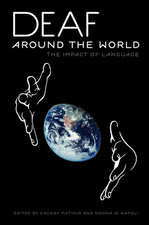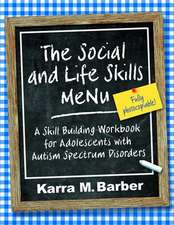Thriving in the Face of Childhood Adversity
Autor Daphne Blunt Bugentalen Limba Engleză Paperback – 11 ian 2013
Preț: 324.16 lei
Preț vechi: 432.00 lei
-25% Nou
Puncte Express: 486
Preț estimativ în valută:
62.03€ • 67.59$ • 52.27£
62.03€ • 67.59$ • 52.27£
Carte tipărită la comandă
Livrare economică 23 aprilie-07 mai
Preluare comenzi: 021 569.72.76
Specificații
ISBN-13: 9780415652827
ISBN-10: 0415652820
Pagini: 256
Dimensiuni: 152 x 229 x 14 mm
Greutate: 0.45 kg
Ediția:1
Editura: Taylor & Francis
Colecția Psychology Press
Locul publicării:Oxford, United Kingdom
ISBN-10: 0415652820
Pagini: 256
Dimensiuni: 152 x 229 x 14 mm
Greutate: 0.45 kg
Ediția:1
Editura: Taylor & Francis
Colecția Psychology Press
Locul publicării:Oxford, United Kingdom
Cuprins
Contents: Introduction. Part 1. Historical, Cultural, and Scientific Perspectives on Children's Physical and Medical Disorders. Ways of Thinking about Children's Physical and Medical Disorders. Conceptualizing Medical and Physical Disorders in the Sciences: A Shifting Story. How Do Children Thrive (Or Fail to Thrive) in the Face of Early Adversity? Part 2. The Experiences of Children with Mobility Constraints. Mobility Constraints: Why the Caged Bird Sings. Parents and Children as Collaborators in Managing Mobility Constraints. I Get By with a Little Help from My Friends. Part 3. The Child in a World Apart: The Experiences of Children who Appear to be Socially Unresponsive. Ways of Understanding the Child in a World Apart. Parental Reactions to the Child in a World Apart. Social Relationships Experienced by Children in a World Apart. Part 4. The Socially Stigmatized Child: The Experiences of Children with Appearances Anomalies. Understanding the Experiences of Children Who Look Different. Parental Responses to Children with Stigmatizing Disorders. Moving Outside the Family: The Worlds of Children Who Look Different. Part 5. The Positive Possibilities of an Early Intervention Program. Epilogue.











